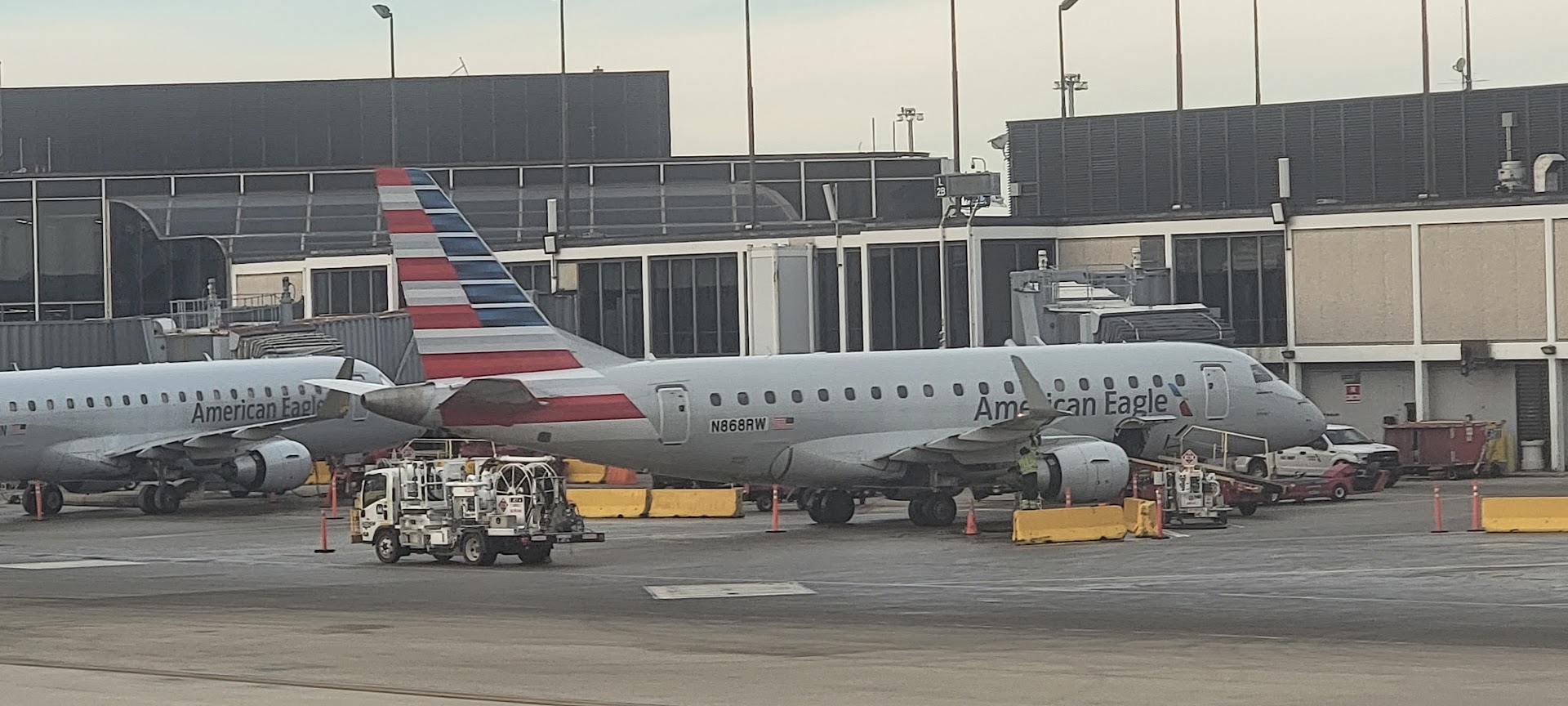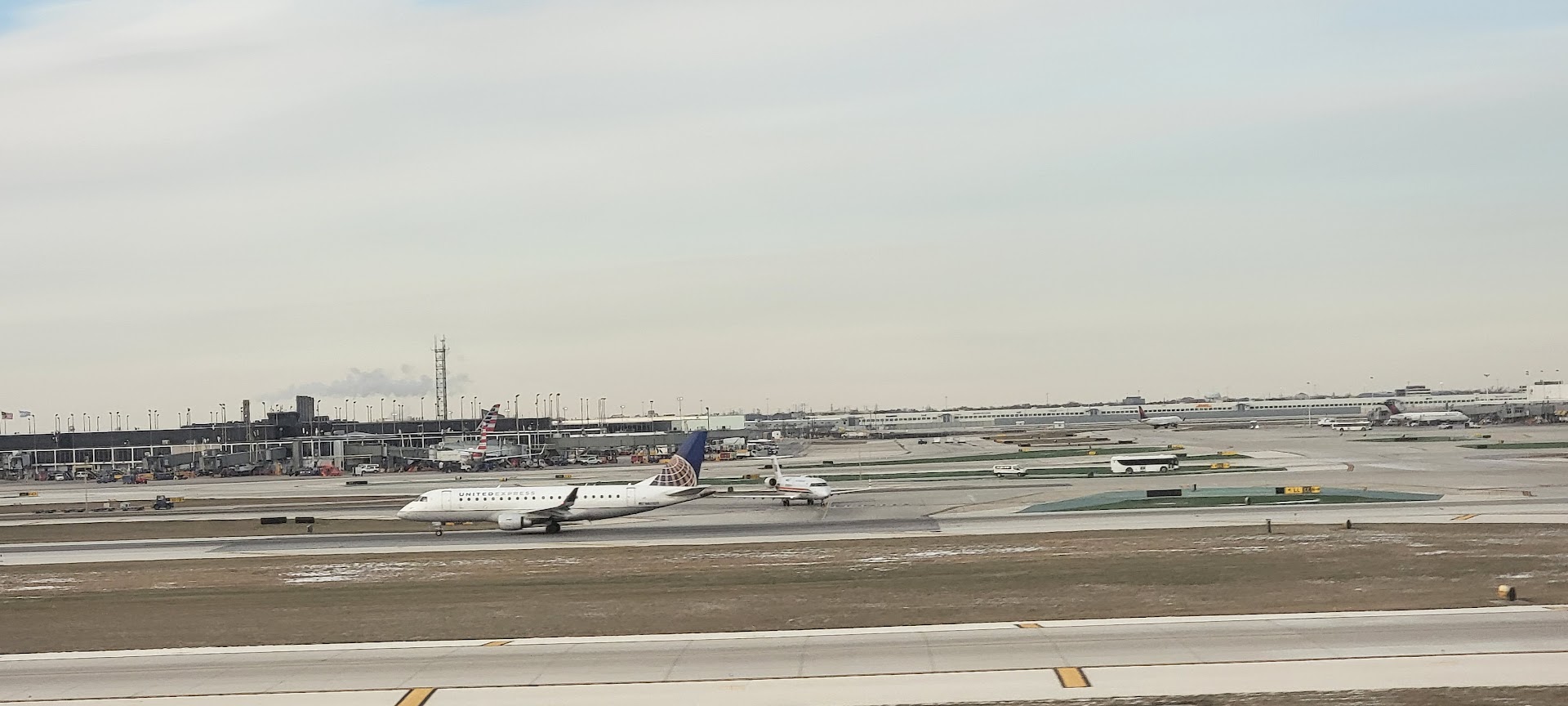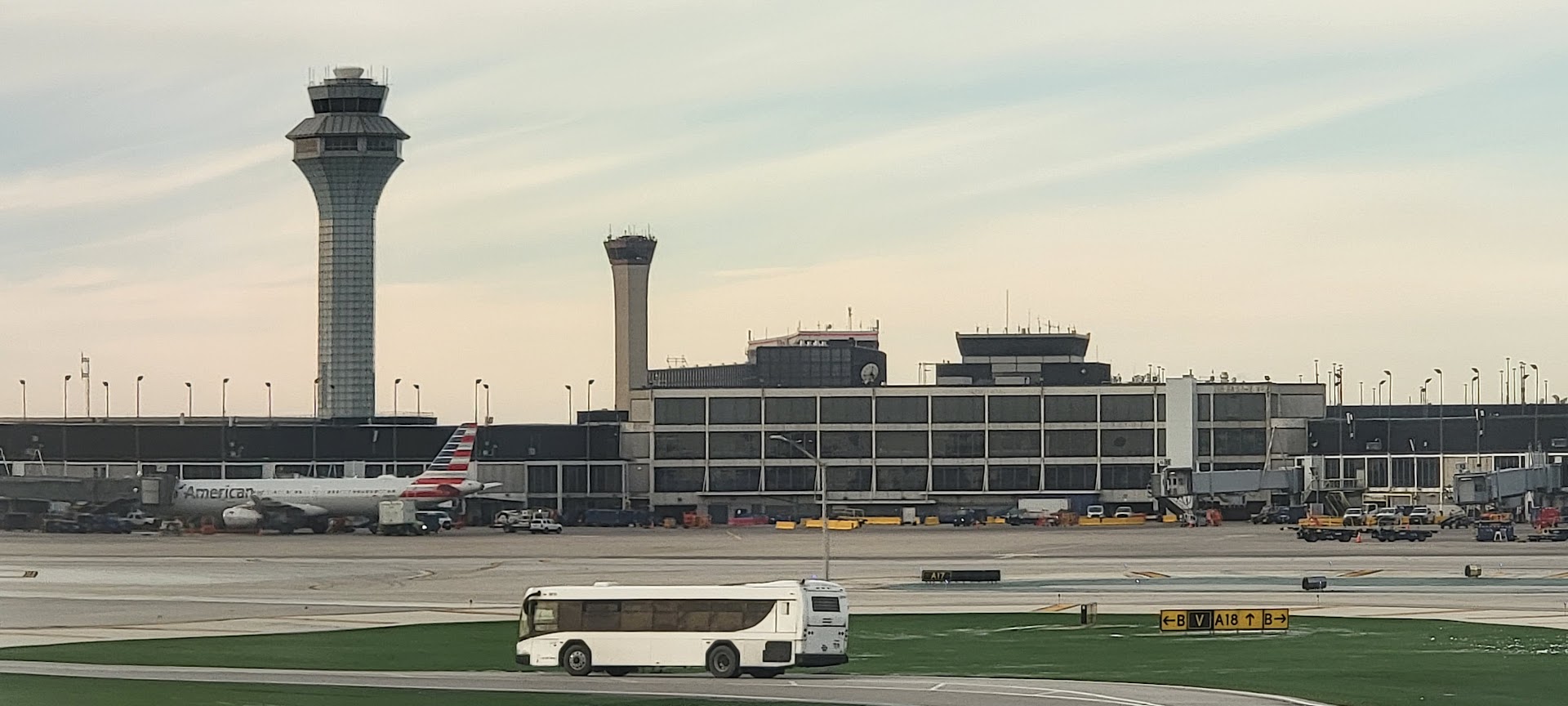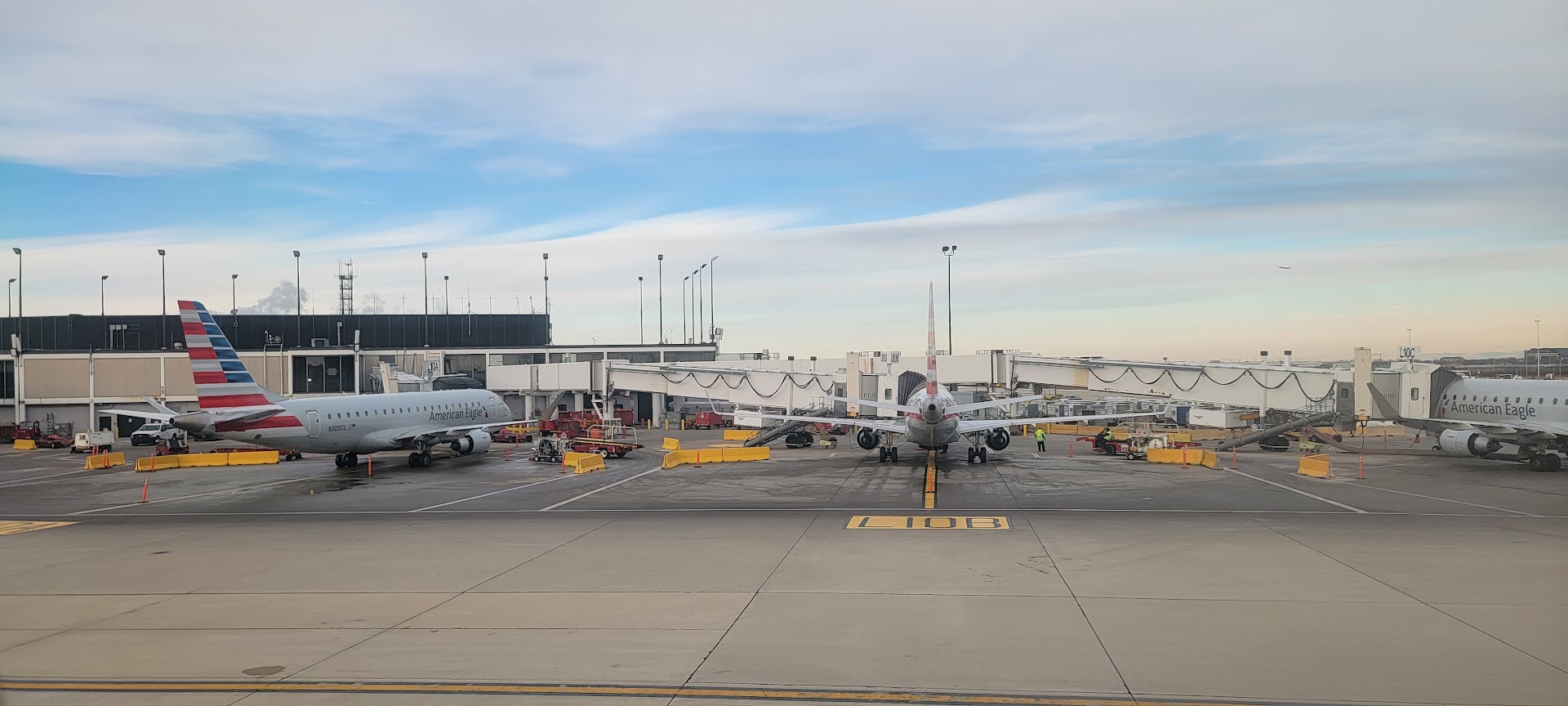The NTSB has issued a report detailing a serious incident last month at Chicago O’Hare where an Embraer 170 mistakenly landed on the wrong runway.
On September 25, 2024, American Airlines wholly-owned regional carrier Envoy Air was operating flight 3936 from Norfolk to Chicago O’Hare and touched down on a parallel runway different from its assigned path. The aircraft, with 68 passengers and crew members onboard, landed on runway 10L instead of the designated runway 10C.

American Eagle Embraer E170 at Chicago O’Hare
The incident unfolded amid a sequence of changing runway assignments for the crew. Initially, based on the weather conditions, the pilots planned to land on runway 27R. Air traffic control later informed them to expect runway 9L. Then they were later shifted to 10R before being ultimately assigned to runway 10C as they approached O’Hare. Chicago O’Hare has 8 runways.

Chicago O’Hare
The captain, serving as the pilot monitoring, programmed the flight-management computer to prepare for a visual approach to runway 10C, while also attempting to back up the visual approach with instrument landing system guidance. However, when the crew loaded the ILS for runway 10C, the computer failed to autotune the localizer frequency, and the identifier for the approach did not appear. This prompted the captain to reload the approach and manually input the ILS frequency, but the issue persisted.
ATC directed Flight 3936 to turn onto a 060° heading to align with the localizer for runway 10C. During the communication, the crew initially read back the incorrect heading of 090°, but this was promptly corrected by the approach controller. The pilots were then instructed to maintain a speed of 170 knots and to contact the O’Hare tower controller once they reached the RAYYY waypoint.
Upon establishing contact with the tower, the captain communicated that the aircraft was on a visual approach to runway 10C and was cleared to land. However, due to the unresolved ILS issue and visual misalignment, the aircraft continued its descent toward the adjacent runway, 10L. ATC personnel in the tower identified the discrepancy but chose to coordinate with the controller responsible for runway 10L to permit the landing, as there were no conflicting aircraft in the vicinity.
According to the investigation, neither the crew nor the ATC issued alerts about the alignment error during the approach. The crew did not inform ATC about their inability to receive the localizer for runway 10C, nor did the controllers question the alignment once the aircraft declared itself on a visual approach to 10C.

Chicago O’Hare
The National Transportation Safety Board opened an investigation into the incident, categorizing it as a “serious incident” due to the potential risks involved. The cockpit voice recorder was overwritten after the incident, erasing potentially critical communications and crew decision-making information.
Initial findings highlight multiple contributing factors, including shifting runway assignments, technical difficulties with the ILS autotuning, and communication missteps during the alignment phase. The close proximity of the two parallel runways at O’Hare—runway 10C and runway 10L, separated by just 370 meters—likely compounded the crew’s visual misalignment.

Chicago O’Hare
FAA regulations dictate that controllers should inform pilots if they become aware of an aircraft aligning with an incorrect runway or surface, and issue corrective instructions. It remains unclear why the ATC did not alert the crew to the misalignment in this instance. The investigation remains ongoing.
(HT: Cheryl)


Ugh, another black box overwritten. When are the FAA going to force airlines to invest in improving that basic safety measure?
Chicago O’Hare is a mess. It should be rebuilt with fewer runways and more logic.
The FAA mandate (to align with EASA) 25-hour cockpit voice recorders will go into effect in March 2025, but only for aircraft manufactured from 2021 on.
The cockpit voice recorder will never be extended to a useful length. The pilot unions block it at every try. They don’t believe airline and government promises that other things said in the cockpit won’t be used against them. Who could blame them.
ATC gave the pilots (4) runway changes!?! I’ve seen (2) and an occasional (3) into busy airports such as JFK and ATL… never (4). I would say the ORD controllers need to ride the Jumpseat to understand how FMS last minute runway changes and checklist work. The crew allowed ATC to place them in an unsafe situation.
Great article.
TLD: Pilot error, compounded by willful concealment of evidence (by omitting to pull tapes and allowing them to be overwritten). The second should be a firing offense.
You mean I can live live stream youtube videos but Black boxes cannot transmit real time data?
The flight data recorder should be a backup to the encrypted data being transmitted to a data storage place under strict control. The voice recorder data is much more sensitive because it may contain indelicate comments. Politics and pilot unions have had strong control of how it is erased. The best solution I can come up with at this time is to have it also encrypted and transmitted with the strong encryption keys being held in a country that is not subject to the laws of Europe, the USA or most other countries and those keys only being released upon consent of the pilots in the cockpit or legal action in case all of them are dead.
Due to parallax view, the chances of tower controllers recognizing the difference between 10L and 10C are pretty remote. You can go ahead and cease that part of the investigation.
Transmitting all the voice data would be problematic over the oceans and maybe elsewhere. Nor do I see a need for it–they just need to extend the recording time sufficiently.
As fro why ATC didn’t alert them–note that they confirmed the errant runway was empty. Things had already gone wrong enough and the failure was going to be harmless–let it go. In a chaotic situation permitting a safe failure often is superior to trying to fixing it.
@jamesb2147
The 2-hour recording limit has nothing to do with cost or technology and everything to do with the pilot unions resisting every time the NTSB suggested that it should be extended. However, the unions finally got overruled and a new limit of 24 hours will go into effect next year, but only for aircraft manufactured relatively recently. So, it will still probably be over a decade before most of the airline fleet has it.
@Loren
Transmitting voice data over oceans now would actually not be very hard with a satellite uplink. It would have been more difficult 20 years ago, but relatively easy now, especially with constellations like Starlink becoming available with high bandwidth at rather cheap prices. It would certainly be useful in cases like MH370… if it weren’t intentionally disabled by the pilots. While airliner crashes in the ocean are thankfully rare, they do happen, and a live CVR and FDR uplink would make finding them and determining what happened much, much faster. In cases where there are survivors, it could also easily be the difference between life and death, though survivable ocean ditches are indeed rare (mostly because ocean ditches in general are rare.)
Rodger, Rodger, Victor, Vector, Surely?…and don’t call me Shirley!
ATC Problem. Yeah, I know ORD is busy, it’s my home airport, ATC PROBLEM.
Unfortunately most comments seems coming from individual that never flown a modern jet into.ohare. 4 runways changes in close proximity of an airport is a major threat and this time it turn out into multiple missteps from atc and cockpit. Instead of thinking of firing anyone or blaming thr data acquisition that serve only after the facts, perhaps we should evaluate how to better handle multiple runway change vs airport distance…
You can always go around
The crew needs to say “no” to multiple runway changes. Poor judgement. Poor PIC application.
I flew as Captain out of ORD for 30 years. Seems like a typical day. Pilots should either look out the freekin’ window or ask for a delaying vector… but it’s visual conditions for God’s sake .i think the controllers did him a solid.. by this point they can tell the crew is up to their eyeballs and headed for a different runway.. they coordinated to ensure no conflict and they safely got this over taxed crew on the ground.
Pilot unions were equally vehement in their opposition when sound recorders in the cockpit were first introduced in 1958 but there has never been an incident when the contents have been misused by unscrupulous company management. The opposition to CVR extension or the addition of cockpit video recording is misplaced but has been called for by many safety organisations such the NTSB.